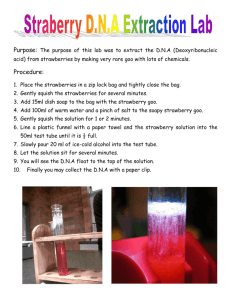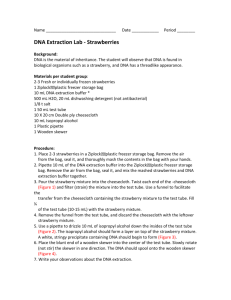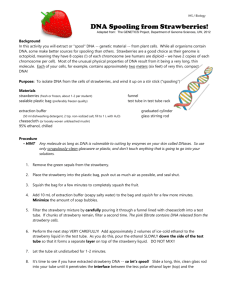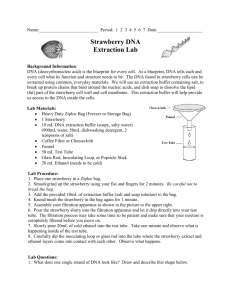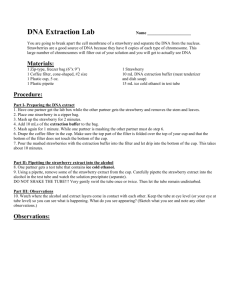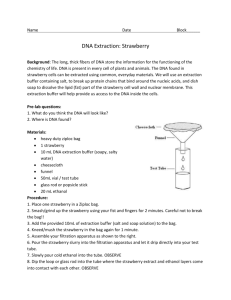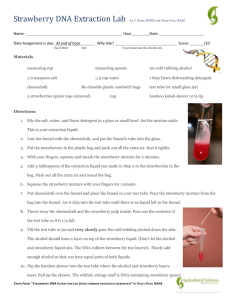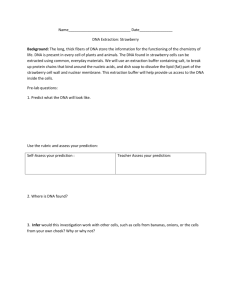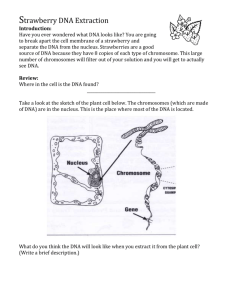B-3 DNA Extraction Strawberry
advertisement
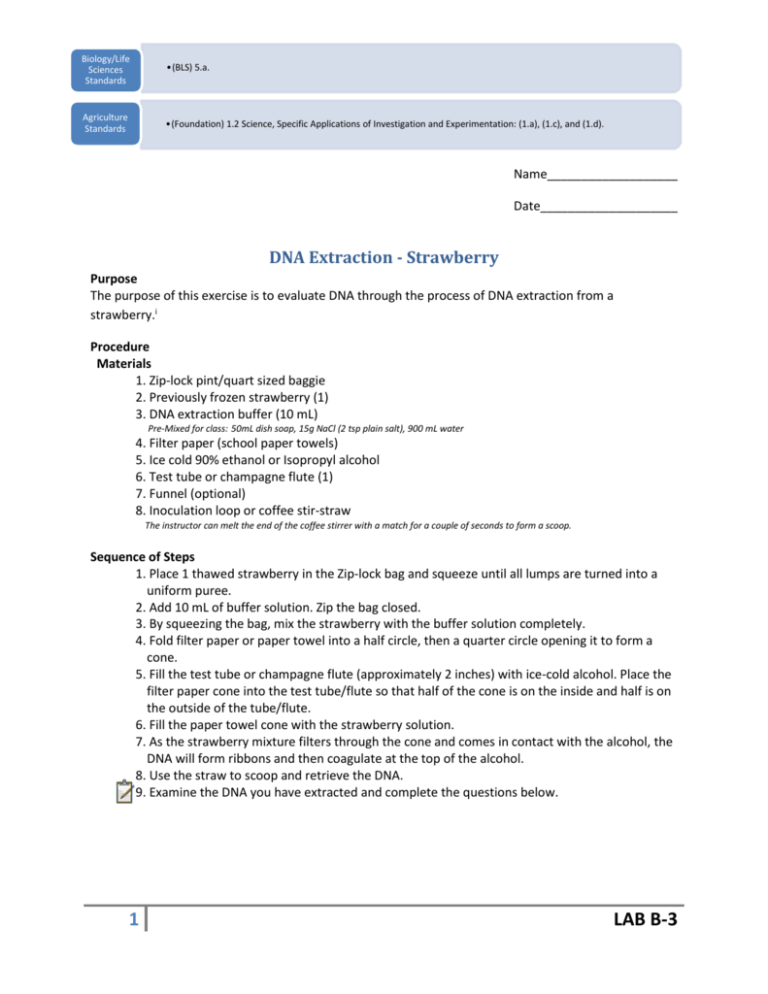
Biology/Life Sciences Standards •(BLS) 5.a. Agriculture Standards •(Foundation) 1.2 Science, Specific Applications of Investigation and Experimentation: (1.a), (1.c), and (1.d). Name___________________ Date____________________ DNA Extraction - Strawberry Purpose The purpose of this exercise is to evaluate DNA through the process of DNA extraction from a strawberry.i Procedure Materials 1. Zip-lock pint/quart sized baggie 2. Previously frozen strawberry (1) 3. DNA extraction buffer (10 mL) Pre-Mixed for class: 50mL dish soap, 15g NaCl (2 tsp plain salt), 900 mL water 4. Filter paper (school paper towels) 5. Ice cold 90% ethanol or Isopropyl alcohol 6. Test tube or champagne flute (1) 7. Funnel (optional) 8. Inoculation loop or coffee stir-straw The instructor can melt the end of the coffee stirrer with a match for a couple of seconds to form a scoop. Sequence of Steps 1. Place 1 thawed strawberry in the Zip-lock bag and squeeze until all lumps are turned into a uniform puree. 2. Add 10 mL of buffer solution. Zip the bag closed. 3. By squeezing the bag, mix the strawberry with the buffer solution completely. 4. Fold filter paper or paper towel into a half circle, then a quarter circle opening it to form a cone. 5. Fill the test tube or champagne flute (approximately 2 inches) with ice-cold alcohol. Place the filter paper cone into the test tube/flute so that half of the cone is on the inside and half is on the outside of the tube/flute. 6. Fill the paper towel cone with the strawberry solution. 7. As the strawberry mixture filters through the cone and comes in contact with the alcohol, the DNA will form ribbons and then coagulate at the top of the alcohol. 8. Use the straw to scoop and retrieve the DNA. 9. Examine the DNA you have extracted and complete the questions below. 1 LAB B-3 Observations 1. Describe the DNA that you extracted from the strawberry. 2. Compare your extraction to the results of the rest of the class. Did you extract more or less DNA than other groups in the class? 3. What factors could affect your results? 4. Recall: What are the three components of DNA? 5. Were these components visible in this lab? Why or why not? 6. Critical Thinking: How could you design this experiment to show that only living (or once living) organisms have DNA? 7. Agriculture Application: DNA determines the traits, such as eye or flower color, animals and plants possess. Brainstorm at least 3 different traits that would be desirable (good) in plants or animals. i Dickson, Chris (2008).DNA Extraction. North High School, Bakersfield, Agriculture Department. 2 LAB B-3

